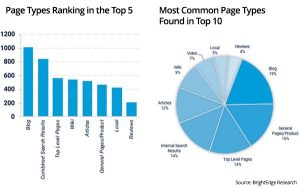The internet has “democratized” many aspects of modern life and business. For example, anyone or any business can easily have a website today. That’s a good thing.
This means that anyone or any business can design or supervise the design of a website. That’s not always a good thing.
Unless they’ve received some training, most people aren’t good designers when they first start out and you know the old saying: You never get a second chance to make a first impression.
If you’re designing your own site using WordPress, WIX, Square, or any of the tools provided by the various web hosts, or if you’re hiring a freelancer to design your site, you need to have some command of what’s important for your site and how you should approach the project.
Let’s start looking at our four secrets of successful website design and project management from what may be an unexpected point of view: your mobile website.
1. Start with the little screen
I think most website owners still consider their mobile site a secondary consideration, but it should be at the top of your list for two solid reasons:
- Mobile is rapidly catching up to desktop for website viewing, and
- Designing for mobile forces you to seriously consider what you want your website to accomplish.
The second point above is the one I want you to focus on. Experienced creators know that creation is easy, editing is hard. And, this is especially dangerous when creating a website, because you aren’t limited by space.
Sheesh, we even have infinite scrolling webpages today!
2. Make the main thing the main thing
If I forced you to express your most important message on one smartphone screen, what would that message be? Ask yourself this question:
- What’s the one thing visitors to my website must receive before they leave?
For some businesses, it might be contact information. For others, it might be competitive pricing information. For others, it might be conveying a sense of expertise or trust.
When you know the answer to this question, you can move on to secondary goals and begin to deal with your website design.
3. Harmonize user experience with goals
As you start to design, you need to switch hats. Previously, you were looking at your website from a business owner’s point of view; now you need to look at it from the visitor’s point of view and consider how search engines will analyze your website.
Let’s start with the KISS rules, which work in virtually every aspect of our lives: Keep it simple, stupid. I don’t want to offend anyone with the word “stupid,” but the fact is that sometimes we can be to “smart” for our own good. Let’s make things easy for ourselves and our website visitors.
Search engine optimization (SEO) expert Scott Keever, points out that all the elements of your site – including those you use to boost SEO – must promote ease of navigation or good UX (user experience). But this is often easier said than done because we are tempted to throw in everything plus the kitchen sink.
Resist that temptation. As I said: keep it simple. If the official Rolling Stones website doesn’t play music when you visit it, do you think yours should?
Consider these questions:
- Are your headlines engaging, short, and clear? Do they properly lead visitors?
- Are your call to actions obvious and abundant?
- Will visitors and search engines immediately know what your site is all about?
- How many pages must your visitors navigate to satisfy your goal? (One is the ideal answer.)
- If you’re trying to build your position as an expert, are you using photos that are obviously stock images?
- Are the design elements – typography, images, logos, colors – consistent with your branding? (Tip: Create a brand style sheet and stick to it.)
4. Don’t forget quality control
If you’re doing your own design, or have hired a freelancer, by the time you get to the finished website, you’ll be too close to the project to rely solely on your own judgment whether or not it’s good enough to go live.
Have others look it over and make sure they are people who will give you their honest opinions. Also, it’s great if they reflect the group or groups you consider your best prospects. If you’re opening a financial consulting firm to help seniors manage retirement funds, find people in that demographic. If you want to sell your band’s EPs online, get members of that audience to look over your site.
Remember, you want people to share your site’s URL, but not in a blog that shames bad website designs…
Digital & Social Articles on Business 2 Community
(21)







